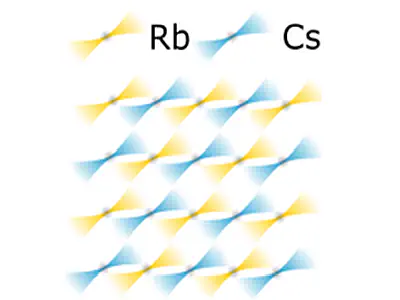Quantum Error Correction in a dual species Rydberg Array (QuERy)

Quantum Error Correction in a dual species Rydberg Array (QuERy)
This project seeks to develop a dual-species platform for quantum computing and simulation with neutral atoms, providing a route to implementing active quantum error correction essential for future scaling beyond 100 qubits. This hardware will simultaneously provide a versatile platform for analogue computing and simulation due to the ability to independently control inter- and intra-species interactions, providing a route to performing studies of complex many-body physics as well as increasing the diversity of real-world optimisation problems that can be tackled using neutral atom hardware.
Over the last decade, neutral atoms have emerged as one of the most promising platforms for quantum information processing, with a major advantage over competing technologies arising from the ability to scale to large numbers of identical qubits as required for performing practical quantum computing. To date, several experiments have demonstrated trapping of qubit arrays with > 256 qubits. To couple neutral atom qubits, highly excited Rydberg states are used which have extremely large electric dipole moments giving rise to strong and controllable interactions. These can be exploited to perform high fidelity multi-qubit gates, with F>0.95 demonstrated for two qubits and intrinsic fidelities of F>0.995 for multi-qubit gates, or for performing quantum simulation of controllable spin models as required for studying materials or solving optimisation problems.
Whilst there has been significant experimental progress, a number of challenges currently limit scaling to larger array sizes for hardware based on a single atomic species. The first arises from finite vacuum lifetime due to collisions with background atoms ejecting atoms from the trap. For room temperature operation, this is typically 10s for 1 atom but means only 10ms for a 1000 atom array. This can be solved by moving to operation at cryogenic temperatures down to 4 K where the cold surfaces cause significant increase in lifetime upwards of > 6000 seconds meaning recovery of times > 6s even for 1000 atoms. The next issue lies in the long readout time for neutral atom qubits, typically requiring 10-50 ms to readout qubit states. With a single species, the cross-talk and scattered light mean readout is destructive across the whole array, with no clear pathway to performing local measurements required for error correction to reach fault tolerant operation.
This project will tackle these two challenges by establishing a dual-species neutral atom array within a 4 K cryostat to obtain enhanced vacuum lifetimes and providing the ability to perform measurement on one species (the readout qubits) whilst retaining coherent quantum states on the other species (the logical qubits). This provides a route to overcome challenges with local addressing and cross talk as the two species operate at optical wavelengths separated by 10s of nm.
For more details see the project webpage or apply here.
- Availability: Open
- Start date: October 2026
- Contact: Dr Jonathan Pritchard